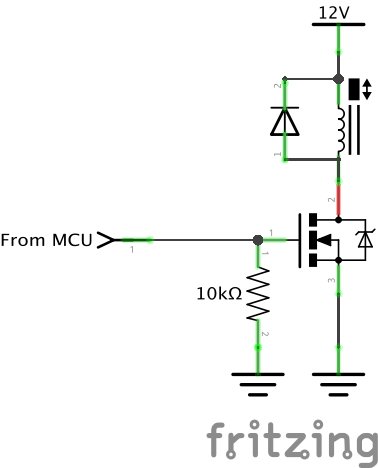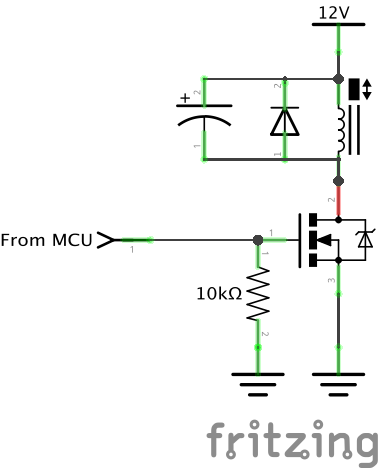I'm converting a reed organ to be MIDI controlled, and I'm using solenoids to pull down on the keys. There's 88 solenoids total, and I'm going to be powering it with 2x 40A 12V power supplies.
The solenoid control circuit I'm using is this:

My problem is that each solenoid draws around 1.3A @ 12V. This results in very hot solenoids after less than a minute of being held down.
There are clever solenoid driver circuits that use a capacitor(http://www.kynix.com/Product/36.html) to give the solenoid the full power at first, then once the capacitor is charged (therefore no longer conducting DC power), power flows through a resistor that limits the current. However, this system needs time for the capacitor to discharge before being triggered again, and the capacitor has to be of a large value which would not work in this application well (my solenoid driver board design is dense enough at the moment... I want my component count to stay as low as possible). There are more complex circuits that get around the capacitor discharge problem using transistors and even more components (how they work is besides the point here) but again, I don't want many more components since every component gets multiplied by 88 circuits.
However, I think I have an idea for a solution, but I don't know if it would work. My idea is to PWM the raw power going into (all of) the existing circuits and then adding a single capacitor in parallel with my solenoid, like this:

Thus, when the MOSFET was triggered, this capacitor would get charged to 12V before discharging into the solenoid, making it fire. Now that the solenoid is down, the PWM power (lets say its 50% duty cycle, therefore equal to 6V) can keep it held down.
Is this idea completely flawed? If it is, any ideas? Thanks.


